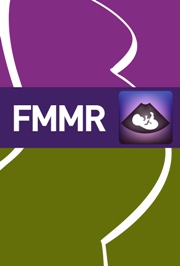Article contents
PREDICTION OF OUTCOME OF EXTERNAL CEPHALIC VERSION FOR BREECH PRESENTATION AT TERM
Published online by Cambridge University Press: 14 December 2005
Extract
The optimal mode of breech delivery has been one of the major controversies in Obstetrics, until the Term Breech Trial was published in 2000. This multi-centre randomised trial showed that planned Caesarean breech delivery is safer than planned vaginal breech delivery, resulting in a significant reduction in perinatal death and serious neonatal morbidity by two-thirds. Since then there was a rapid and significant worldwide changes in the clinical management of breech presentation at term towards planned Caesarean section (CS). Although the Term Breech Trial is a well-designed and conducted study, it is not without criticism. Firstly, among the perinatal deaths reported in the study, some were unrelated to the mode of delivery such as antenatal stillbirths. If such perinatal losses were excluded from analysis, the difference in perinatal death might not have reach statistical significance. Secondly, some intrapartum deaths occurred during intermittent fetal heart monitoring. It is plausible that these could have been prevented if continuous monitoring had had carried out. Furthermore, although neonatal morbidity after vaginal breech delivery is higher, whether these morbidities have significant long term developmental or neurological effect is still controversial. In fact in the follow-up study of babies from the Term Breech trial at the age of 2 years, no statistically significant difference in neurodevelopmental delay or death rate was found in children between the treatment groups. Finally, the cost for the preventing 1 perinatal death or serious fetal morbidity requires an additional performance of 14 CSs. This figure rises to 39 CSs among developing countries. Elective CS is not only associated with an increase in short-term maternal morbidity, but also long term complications including risk of scar rupture in subsequent pregnancies, placenta praevia, abnormal adherent placentation, and of unexplained antenatal stillbirth. The medical cost for managing these long term complications could be substantial.
- Type
- Research Article
- Information
- Copyright
- © 2005 Cambridge University Press
- 1
- Cited by


